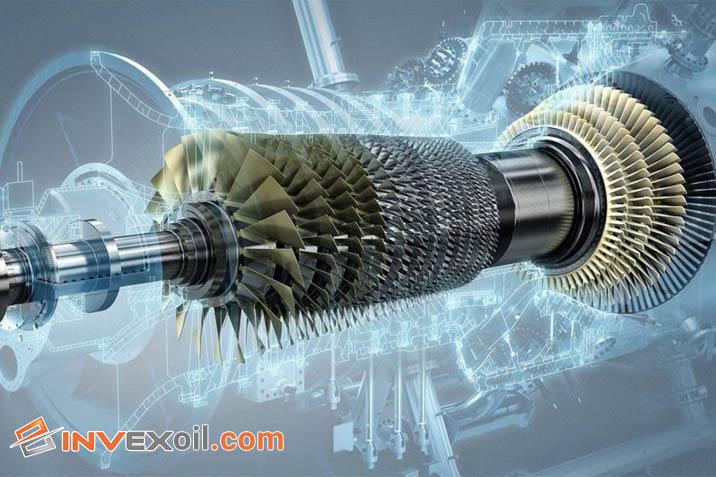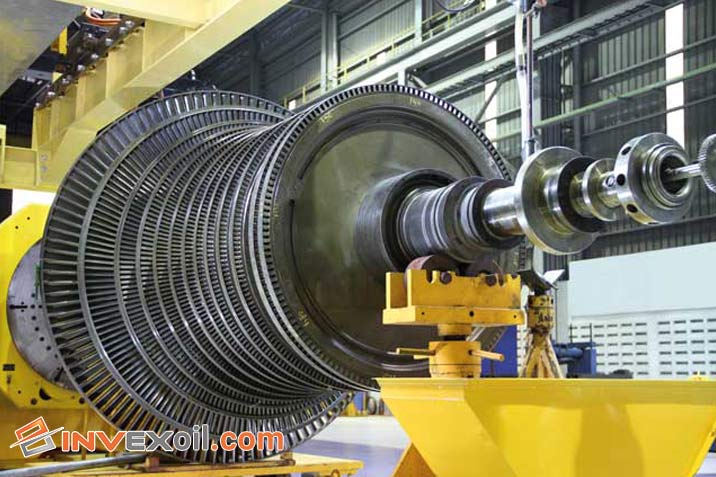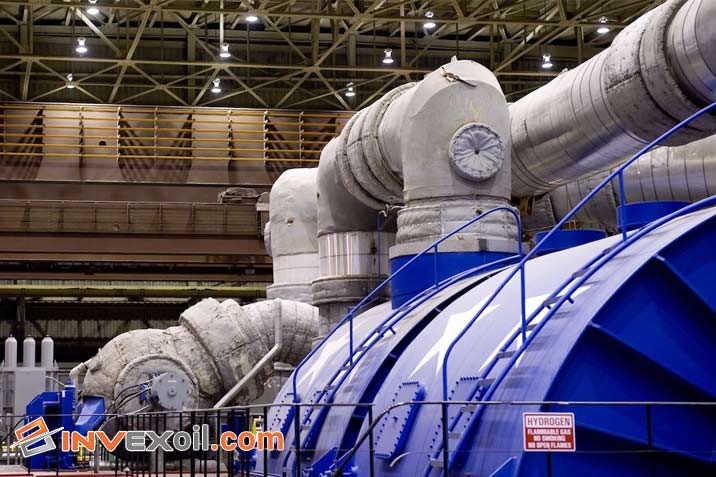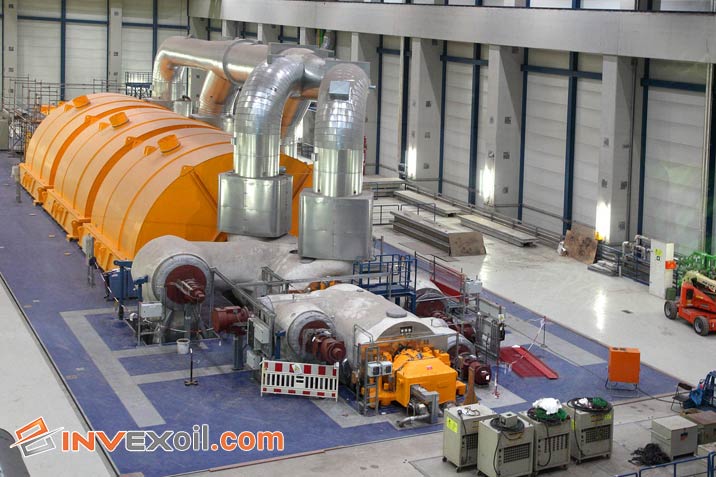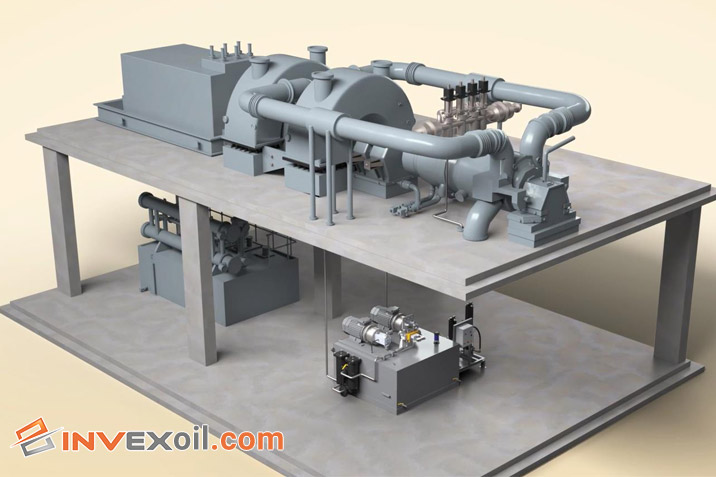Steam turbine oil systems play a critical role in the safe and reliable operation of steam turbines. These systems provide lubrication, cooling, and sealing for the turbine’s bearings and other components. To ensure the long life and efficiency of a steam oil system, it is important to properly maintain the oil. This includes Turbine oil purification to remove contaminants that can damage the turbine.
Proper turbine oil process is essential for the safe and reliable operation of steam turbines. By removing contaminants from the oil, the turbine oil process can help to extend the life of the turbine and improve its efficiency.
Table of Contents
Quick answer, What is a steam turbine oil system?
it is a closed-loop system that circulates oil through the turbine. The oil is pumped to the bearings and other components, where it provides lubrication, cooling, and sealing. The oil is then returned to the reservoir, where it is filtered and cooled before being recirculated.
What are the different types of these systems?
There are two main types of steam systems:
- Open-loop systems use a separate reservoir of oil for the bearings and other components. The oil is pumped from the reservoir to the turbine, where it provides lubrication, cooling, and sealing. The oil is then drained back to the reservoir, where it is filtered and cooled before being recirculated.
- Closed-loop systems use the same oil for the bearings and other components. The oil is pumped through a heat exchanger, where it is cooled before being circulated back to the turbine. Closed-loop systems are more efficient than open-loop systems, but they are also more complex and expensive to maintain.
Components of this Systems
A steam turbine oil system is a complex system that consists of a variety of components, each of which plays an important role in the safe and reliable operation of the turbine.
| Component | Type | Function |
| Pumps | Gear, centrifugal | Circulates oil through the system |
| Filters | Paper, cartridge, full-flow | Removes contaminants from the oil |
| Coolers | Air, water | Removes heat from the oil |
| Control valves | Pressure relief, flow control, temperature control | Regulates the flow of oil through the system |
| Instrumentation | Temperature sensors, pressure sensors, flow sensors | Monitors the performance of the system |
Pumps
Pumps are used to circulate oil through the system. There are two main types of pumps used in turbine oil systems: gear pumps and centrifugal pumps. Gear pumps are typically used in smaller systems, while centrifugal pumps are used in larger systems.
Filters
Filters are used to remove contaminants from the oil. There are a variety of types of filters used in steam turbine oil systems, including paper filters, cartridge filters, and full-flow filters. Paper filters are the most common type of filter used in oil systems. Cartridge filters are more expensive than paper filters, but they offer better filtration performance. Full-flow filters are the most effective type of filter, but they are also the most expensive.
Coolers
Coolers are used to remove heat from the oil. There are two main types of coolers used in turbine oil systems: air coolers and water coolers. Air coolers are the most common type of cooler used in steam turbine oil systems. Water coolers are more expensive than air coolers, but they offer better cooling performance.
Reservoirs
Reservoirs are used to store oil for the system. The reservoir should be large enough to hold enough oil to meet the needs of the system. The reservoir should also be equipped with a sight glass so that the level of oil in the reservoir can be easily monitored.
Control valves
Control valves are used to regulate the flow of oil through the system. There are a variety of types of control valves used in steam turbine oil systems, including pressure relief valves, flow control valves, and temperature control valves. Pressure relief valves are used to protect the system from excessive pressure. Flow control valves are used to regulate the flow of oil to the turbine bearings and other components. Temperature control valves are used to regulate the temperature of the oil in the system.
Instrumentation
Instrumentation is used to monitor the performance of the turbine system. This includes temperature sensors, pressure sensors, and flow sensors. The instrumentation should be connected to a control system so that the performance of the system can be monitored and controlled.
Functions of a Steam Turbine Oil
A turbine oil system performs a variety of functions to ensure the safe and reliable operation of the turbine. These functions include:
-
Lubrication
This system provides lubrication for the turbine’s bearings and other components. Lubrication helps to reduce friction and wear, which can lead to premature failure of the turbine.
-
Cooling
The system also helps to cool the turbine. The oil circulates through the turbine, absorbing heat from the bearings and other components. This helps to prevent the turbine from overheating and damaging the components.
-
Sealing
This oil system helps to seal the turbine. The oil forms a film between the turbine’s rotating and stationary parts, which helps to prevent leaks. This is important for maintaining the pressure within the turbine, which is necessary for proper operation.
-
Control
The oil system can also be used to control the speed of the turbine. The oil is pumped through the turbine at a controlled rate, which helps to regulate the speed of the turbine. This is important for maintaining the turbine’s performance and preventing damage.
-
Flushing
The system can also be used to flush the turbine. The oil is circulated through the turbine at a high rate, which helps to remove contaminants from the oil. This helps to keep the oil clean and prevent damage to the turbine.
Table of the different functions of the steam, along with the specific components that perform each function:
| Function | Component |
| Lubrication | Pumps, filters |
| Cooling | Coolers |
| Sealing | Oil film |
| Control | Control valves |
| Flushing | Pumps |
The Vital Role of a Well-Maintained Steam Turbine Oil System
When it comes to this system, proper maintenance isn’t just an option; it’s imperative. Maintaining your oil system ensures uninterrupted power generation and optimal efficiency.
| Maintenance Benefit | Description |
| Increased efficiency | Well-maintained steam turbine oil systems can help to improve the efficiency of the steam turbine by reducing friction and wear. This can lead to significant savings on energy costs. |
| Extended lifespan | can help to extend the lifespan of the steam turbine by protecting it from damage. This can save money on costly repairs and replacements. |
| Improved safety | can help to improve the safety of the steam turbine by reducing the risk of fires, explosions, and other accidents. |
| Increased reliability | help to increase the reliability of the steam turbine by reducing the number of unplanned outages. This can help to keep businesses running smoothly and avoid lost productivity. |
Why Maintaining Your Steam Turbine Oil System is Non-Negotiable
Neglecting your turbine oil system can result in costly consequences. Inadequate maintenance can lead to decreased turbine performance, higher energy consumption, and even unexpected downtime.
Consequences of Neglect: The Risks of Inadequate Steam Turbine Oil Maintenance
- Reduced lubrication efficiency
- Increased friction and wear
- Elevated operating temperatures
- Accelerated component degradation
Mastering Maintenance: Ensuring Peak Performance
Mastering the art of maintenance pays off. Regular oil analysis, filtration, and adherence to maintenance schedules maximize system longevity, efficiency, and overall performance.
Here are some of the key benefits of using steam turbine oil:
- Reduces friction: Steam turbine oil helps to reduce friction between the turbine’s moving parts. This can extend the life of the turbine and improve its efficiency.
- Cools the bearings: Steam turbine oil helps to cool the turbine’s bearings. This prevents overheating, which can lead to premature failure.
- Seals the turbine: Steam turbine oil helps to seal the turbine’s bearings and other moving parts. This prevents leaks, which can reduce the efficiency of the turbine and damage its internal components.
- Controls the speed: Steam turbine oil can be used to control the speed of the turbine. This is important for maintaining the turbine’s performance and preventing damage.
Here are some of the factors to consider when selecting steam turbine oil:
- The type of turbine: The type of turbine will determine the type of oil that is needed. For example, steam turbines that operate at high temperatures will require a different type of oil than turbines that operate at lower temperatures.
- The operating conditions: The operating conditions of the turbine will also affect the type of oil that is needed. For example, turbines that operate in dusty environments will require an oil that has good anti-wear properties.
- The cost: Steam turbine oil can be expensive, so it is important to select an oil that is cost-effective for the specific application
Conclusion
Steam turbine oil systems are critical components of any steam turbine. They provide lubrication, cooling, sealing, and control for the turbine’s bearings and other moving parts. To ensure the safe and reliable operation of the turbine, oil systems must be properly maintained.
Proper maintenance of these systems can offer a number of benefits, including extended turbine life, reduced risk of downtime, improved turbine efficiency, and reduced operating costs. By following the recommended maintenance schedule and tips above, you can help to ensure that your steam oil system operates safely and efficiently for many years to come.
FAQ
What is a steam turbine oil system?
A steam oil system is a critical component of any steam turbine. It provides lubrication, cooling, sealing, and control for the turbine’s bearings and other moving parts.
What are the benefits of proper maintenance of a steam turbine oil system?
Proper maintenance of a steam system can offer a number of benefits, including extended turbine life, reduced risk of downtime, improved turbine efficiency, and reduced operating costs.
What are the most common problems with steam turbine oil systems?
The most common problems with steam systems include:
- Oil contamination
- Oil leaks
- Oil degradation
- Oil temperature and pressure problems

Hello, This is Matteo Hudson Copywriter from InvexOil. We are here to provide super-important content to help you learn more easily and be involved in the world of Petroleum and Chemistry. We are here to answer your questions, help you to have better services, and also find the best solution for your problems. Don’t be shy and ask your questions in the comment box or call our number. If you want to connect with me directly, you can search for my name on Linkedin.

